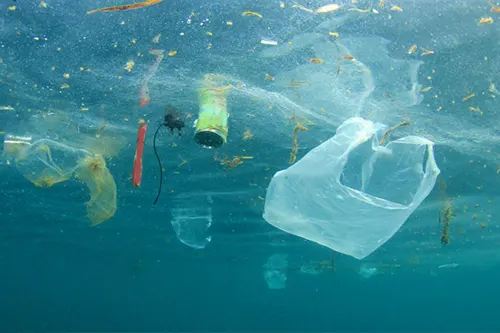With no adequate legislation and regulations in place yet to avert all types of single-use plastic items, it is important that citizens make eco-friendly choices and demand companies to follow suit. The Pearl Protectors maintain an engaging social media platform to inspire a plastic-free lifestyle with hashtags such as the #NoPlasticThursday which is a day allocated in a week to share with us a photo of a plastic-free choice made during the week, #PlasticFree2020, #SayNoToPLastic and assist in sharing information on the available alternatives.
Non-recyclable plastic straws are one of the most prevalent types of plastic waste on the beach. While straws are not essential, reusable alternatives that can be purchased range from stainless steel straws, bamboo straws, paper straws, silicone straws, plant-based straws and even pasta straws.
 Useful for minutes, but here to stay for centuries, plastic bags keep finding their way into the stomachs of the largest animals that exist. Choosing anything among cloth bags, paper grocery bags, mesh produce bags and an array of other reusable bags to carry groceries prevails more and more of the otherwise choking hazards from reaching vulnerable marine ecosystems.
Useful for minutes, but here to stay for centuries, plastic bags keep finding their way into the stomachs of the largest animals that exist. Choosing anything among cloth bags, paper grocery bags, mesh produce bags and an array of other reusable bags to carry groceries prevails more and more of the otherwise choking hazards from reaching vulnerable marine ecosystems.
A single-use plastic bottle has a lifespan of about 450 years. Even so, it still leaves micro bits of plastic that would continue to create macro problems. Out of the many options, new inventions such as the bamboo bottle that made headlines for its organic nature are highly recommended.
Plastic cups and cutlery are the go-to options in many food stalls. Carrying your own reusable cup/ bottle and cutlery would save these one-time plastics from ending up in the ocean.
According to the United Nations Environment Programme (UNEP), a typical exfoliating shower gel can contain roughly as much plastic in microbeads in the cosmetic formulation as is used to make the plastic packaging it comes in. Sizes as small as 5mm are designed to be rinsed-off or go down the drain, which results in microbeads easily ending up in waterways where fish mistake them for food.